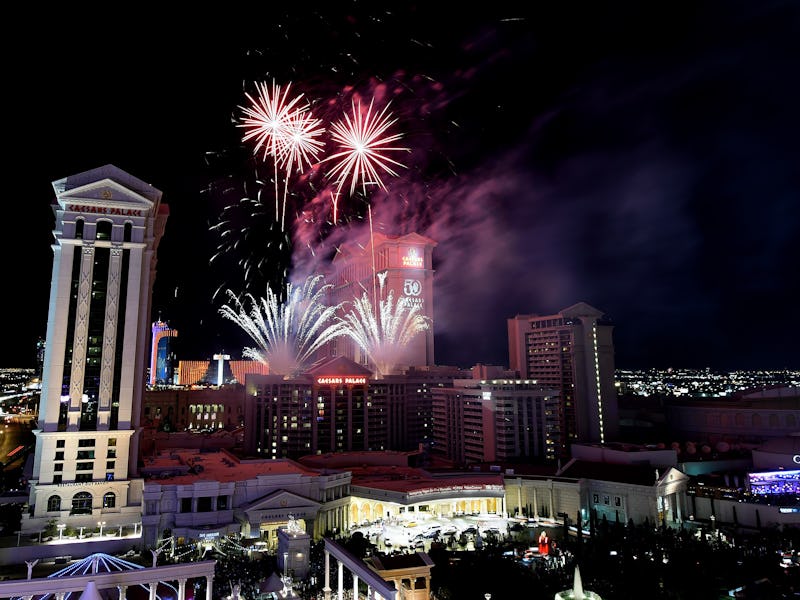Fireworks Can Hurt Your Lungs More Than a Cigarette
It doesn't have to rain on your parade.

Last Fourth of July, the live air pollution maps at Berkeley Earth captured a curious phenomenon. A wave of small particulate hit the East Coast shortly after sunset and followed west like a ripple over water.
“It was a fascinating thing to be able to watch,” Liz Muller, executive director of Berkeley Earth, tells Inverse. The cause was clear: exploding fireworks leaving a smoky trail in their wake.
It’s something researchers there had noticed before. On one day in early 2015, pollution levels over eastern China spiked so far off the charts that the scientists thought it had to be a fluke — noise in the data that was interrupting the signal. They ruled it out as an outlier until it occurred to lead scientist Robert Rohde to check if the very bad day correlated with Chinese New Year celebrations.
Fireworks are made of chemicals that explode into vibrant and noisy displays when lit up. When it’s over, the burnt remains of those materials fall back to Earth, some of them as small particulate matter. A major indicator of air quality is the concentration of PM2.5 — particles 2.5 microns across or smaller. These can cause significant health problems in the heart and respiratory system because they lodge themselves deep in the lungs.
Particulate matter concentrations spike dramatically for Chinese New Year celebrations.
But you probably needn’t let this fact rain on your July Fourth parade. Muller, for one, isn’t. “We looked at the PM2.5 spike of air pollution in the Bay Area, and we were joking that we were going to next year bring the kids to the place that had the worst air pollution, on the theory that it would also have the best fireworks.
That’s coming from someone with two asthmatic children, who thinks about air pollution and its health consequences quite a bit more than most. “My experience is that the air pollution from fireworks tends to go away very quickly and the amount of exposure is probably much lower — and this is a guess — than something like a barbecue in your backyard, or, heaven forbid, making s’mores over a fireplace,” she says. “That fire pit smoke is bad. It makes me cough and sneeze in a way that fireworks don’t.”
A 2015 study in Atmospheric Environment found a 42 percent average bump in PM2.5 across 315 U.S. air quality monitoring sites for the 24 hour period following July Fourth displays. At sites close to fireworks displays, the jump was 370 percent. At the worst sites, the air quality would have equivalent health consequences as smoking about four cigarettes. To put that in perspective, the worst air quality among all the U.S. monitoring sites on July Fourth was still only as bad as an average day in Beijing.
The very cautious Independence Day revelers might choose to watch the displays from an indoor location equipped with a good air purifier. A respirator mask rated for a high percentage of PM2.5 filtration will also do the trick, if you don’t mind the strange looks you’ll get. (Forget those paper surgical masks that are emblematic of China’s air pollution problem — if it doesn’t make a firm seal around your face it’s unlikely to do you much good.)
For all but the most sensitive, though, simply picking a spot upwind of the fireworks will likely be more than enough protection. If a cloud of smoke does happen to drift your way, move to somewhere where it isn’t.